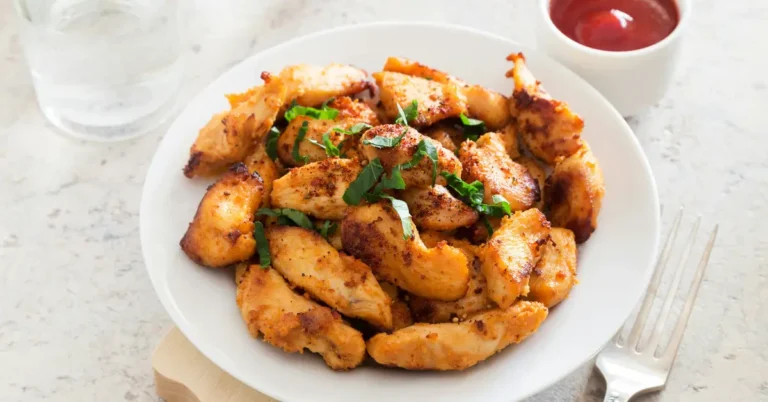Seeking a way to cool down during the summer without compromising your low-carb diet?
I absolutely love a good smoothie, especially when it aligns with my low-carb lifestyle. It’s thrilling to think that you can enjoy the rich, creamy texture and the burst of tropical flavors while still keeping your carbohydrate intake in check.
Many smoothie lovers might worry that their favorite blends are off-limits, but I’m here to tell you that it’s entirely possible to indulge in a tropical smoothie that fits nicely within a low-carb diet plan.
Navigating a smoothie menu to find low-carb options can be a bit of a treasure hunt, but I’m determined to seek out those hidden gems. Whether it’s modifying a classic favorite or discovering a new go-to blend, the possibility of enjoying a luscious, low-carb tropical smoothie excites me every time. It turns out that you don’t have to compromise on taste or texture – it’s all about making smart, delicious choices.
Essentials of a Low Carb Tropical Smoothie

My excitement about finding low-carb options at places like Tropical Smoothie Cafe knows no bounds. Their menu is usually packed with fruit-filled, high-carb beverages, but with some clever adjustments and the right ingredients, you can tailor a smoothie just for you. Picture this: sipping a delightful, keto-friendly smoothie that doesn’t tip the carb scale, like the Keto Avocado Smoothie with its creamy avocado goodness and a hint of lime zest, which offers just 3g net carbs.
Navigating a smoothie menu to find low-carb options can be a bit of a treasure hunt, but I’m determined to seek out those hidden gems. Whether it’s modifying a classic favorite or discovering a new go-to blend, the possibility of enjoying a luscious, low-carb tropical smoothie excites me every time. It turns out that you don’t have to compromise on taste or texture – it’s all about making smart, delicious choices.
Crafting the perfect low carb tropical smoothie is an exciting adventure! I always focus on striking a balance between luscious flavors and maintaining a low carb profile.
Choosing Low Carb Fruits
For a tropical smoothie that’s low on carbs, I am selective with my fruits. Berries like strawberries, raspberries, and blackberries are my go-to options because they’re deliciously sweet yet low in net carbs.
Selecting Healthy Fats
Incorporating healthy fats is crucial for a satisfying low carb tropical smoothie. I usually opt for avocados, which are rich in monounsaturated fats, or I’ll add a touch of coconut milk for its creamy texture and tropical flair. The Keto Avocado Smoothie is a prime example of using these fats to create a deliciously thick and nutrient-packed drink.
Preparation Techniques
Creating a low carb tropical smoothie is entertaining and simple, especially when you know the best techniques to bring out the flavors without adding excess carbs. Let’s take a look at how to make your smoothie preparation a breeze!
Blending Tips
To achieve a smooth and creamy consistency in your low carb tropical smoothies, I recommend starting with a high-quality blender. Start with the liquid base to facilitate smoother blending and layer your ingredients with the softest items, like leafy greens, nearest the blades, and then add firmer ingredients like frozen fruits or ice on top. A handy technique is to pulse a few times to break down the larger pieces before switching to full blend mode. If I find my smoothie is too thick, I’ll just add more liquid a tablespoon at a time.
Sweetening Without Sugar
I’ve discovered that the key to a delicious low carb smoothie is mastering the art of sweetening without sugar. Instead of traditional sweeteners that are high in carbs, opt for natural, low-carb options. Stevia and erythritol are great choices—they’re powerful sweeteners, so a little goes a long way! I love adding a bit of unsweetened coconut milk for its natural subtle sweetness and richness.
By focusing on these preparation techniques, you can whip up a satisfying low carb tropical smoothie that’s both delicious and in line with your dietary goals. With each blend, I’m always excited to taste the vibrant, tropical flavors that whisk me away on a mini vacation, right in my kitchen!
Nutritional Benefits

When crafting a low carb tropical smoothie, I always keep nutritional benefits at the forefront. The key for me is balancing taste with health-promoting ingredients that align with a low carb lifestyle.
Understanding Carbs and Sugars
I’m well aware that carbs are often plentiful in tropical fruit. Healthy smoothies need to be mindful of the sugar content—even naturally occurring sugars can add up. However, by choosing fruits with lower net carbs, I can create a delectable smoothie without the carb overload. For instance, small portions of berries or a splash of coconut milk can enhance flavor without tipping the carb scale.
- Berries: Lower net carb count, rich in antioxidants.
- Coconut Milk: Adds creaminess, and reduces carb impact.
Opting for ingredients like these, I can enjoy a tropical smoothie while maintaining my carb count. It’s all about smart choices!
Boosting with Proteins and Fibers
To elevate the nutritional profile of my tropical smoothies, I focus on including sources of protein and fiber for sustained energy and satiety. A scoop of whey protein or a handful of chia seeds can significantly enrich the smoothie’s nutritional value, providing essential amino acids and helping to keep my digestion regular.
- Whey Protein: High-quality protein, that supports muscle repair.
- Chia Seeds: High in fiber, a source of omega-3 fatty acids.
By incorporating these power-packed ingredients, my low carb tropical smoothie becomes a nutrient-dense, muscle-feeding powerhouse that also keeps me full longer.
FAQ
What ingredients are typically used in a low carb tropical smoothie?
A low carb tropical smoothie usually includes ingredients like coconut milk, avocado, spinach, and tropical fruits in a small amount like pineapple or mango.
Can I make a low carb tropical smoothie without added sugars?
Yes, you can sweeten your smoothie with natural sweeteners like stevia or monk fruit, or simply rely on the natural sweetness of the fruits used.
Are low carb tropical smoothies suitable for weight loss?
Yes, they can be a part of a weight loss plan because they are lower in carbohydrates, which can help manage blood sugar levels and promote fat loss when consumed as part of a balanced diet.
If you liked this blog post about the topic: Low Carb Tropical Smoothie, don’t forget to leave us a comment down below to tell us about your experience with it. And don’t forget to follow us on Pinterest so you don’t miss any more Diet, Nutrition, and Fitness content.





